It beats, it loves, it gets stressed and it stops - a peek into your heart.
This week in @Steemit-Italia Body, Art, Science, Emotion contest, the organ of the week is - Heart. There is a lot that has been said and written about heart. Be it in science, art, literature, or philosophy. It is everywhere. But, what makes this organ so interesting? A heart can't think, but somehow, almost every emotion is described in terms of my heart feels, my heart says. But why?
I can write a poem or the science of heart to participate in this contest. It is hard to choose. My heart says that I should rather contribute by writing about - why is heart, the heart of romantic poetry?
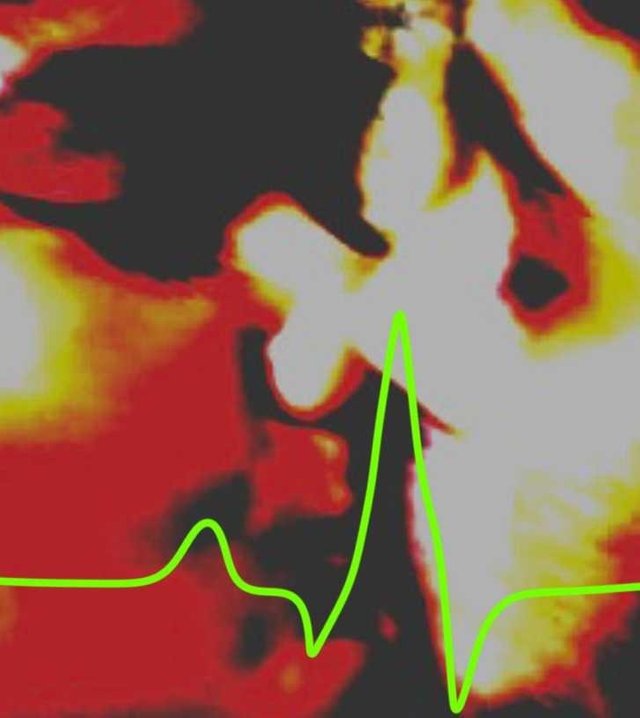
From heartbeat at first kiss to the end of days.
Image clicked and edited by @scienceblocks
Why did chicken cross the road?
Probably because there was a good looking rooster, on other side of the road. The rooster made a gesture that made the chicken skip her heartbeat, made her hormones go nuts, and she ran across the road to mate with him. Well hormones and everything is fine, but why did I use the phrase "skip her heartbeat" and it sounded so normal to you?
In fact why do we have songs like - "you are here in my heart, and my heart will go on." Did Celine Dion write this song for a pacemaker? When Wham! in 1984 or later Taylor Swift sang "last Christmas I gave you my heart, the very next day you gave it away" - were they refering to heart transplant? No, hell no.
Though, love as we know it resides in brain, but every romantic song in history of mankind refers to heart as the core of love. But why? What is so special that happens in heart, that it is the symbol of love across the globe? Why does your heart break when relationship ends? Why does it sink when you feel immense sadness or grief? How emotions that makes it beat in different rhythms, also stops it? Let's start by building the heart first.
This is what your heartbeat is made of
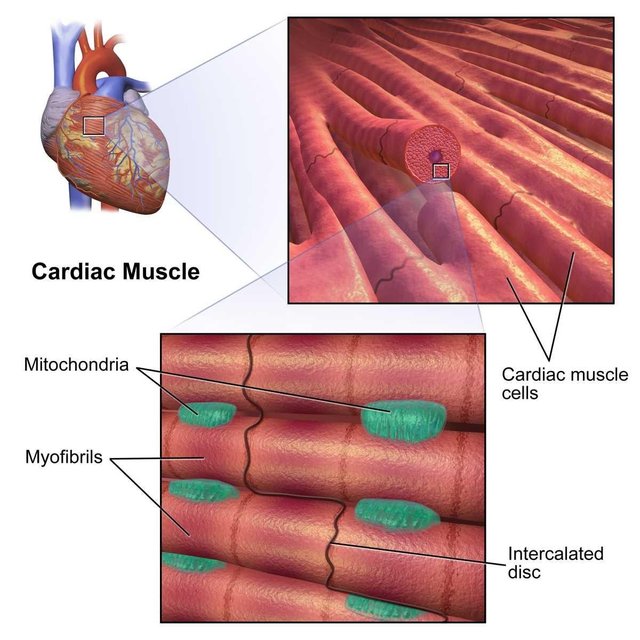
A peek inside your heart
Image by BruceBlaus | CC BY-SA 4.0
Your heart is made of a specialised muscle, and just like your skeletal muscles or smooth muscles, it contracts and relaxes. However, unlike the other muscles it does it repeatedly at a constant pace; from the day you are born, until you die. The constant rythmic contraction and relaxation of heart, forms the rythm of life - the heartbeat. The basic unit of your heart, which forms the heart muscles are these cells called cardiomyocytes.
Even on the cell culture dish, the freshly made cardimyocytes, from embryonic stem cell, show spontaneous beating(Satin et al., 2004). Each cardiomyocyte cell contracts by same actin-myosin contraction mechanism(see video). The contraction is initiated by a calcium ion(Ca2+) and it relaxes when the signal is removed.
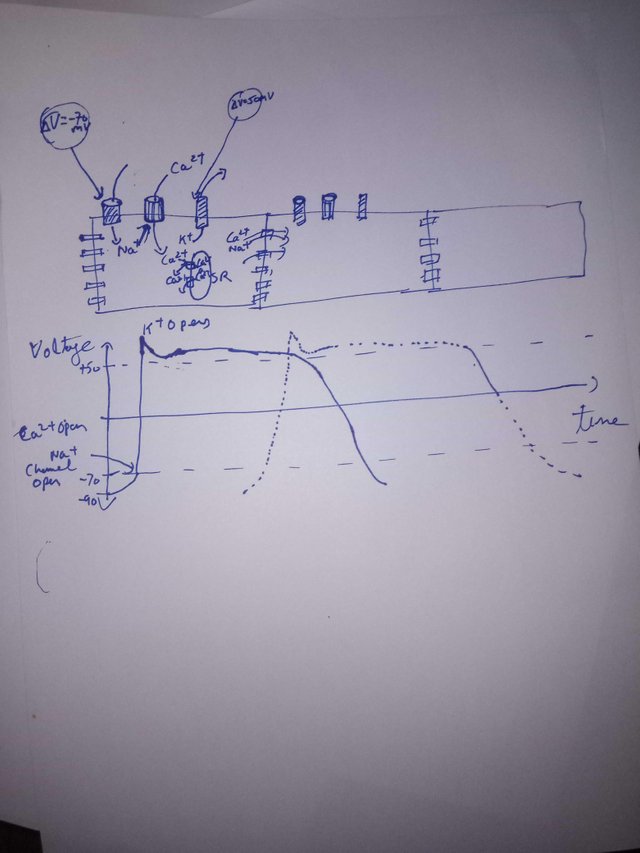
As electrical impulse from previous cell arrives to the present one via gap junction, this cell becomes slightly positive. The sodium channel opens at this voltage causing influx of sodium ions. Soon this depoazation opens voltage gated calcium channels. The calcium that enters the cells also causes opening of sarcoplasmic reticum(SR) calcium pools. The calcium causes cells to contract. Meanwhile, pottasium channels open causing the efflux of K+ ions outside. This starts repolarization of cells. The calcium channels also close slowly during the pleatu in the graph. But before this cell could relax the signal reaches the next neighbour.
However, there is not one or two cardiomyocytes in the heart. There are billions, arranged in sheets weaved by cardiac muscle fibres, formed by interconnected cardiomyocytes. And all of them need to contract and relax in sync. They are synced via electrical impulses generated by movement of ions, in and out of the cells. Like any cell, there is a electrical potential maintained across the membrane of cardiac muscle cells by ion pumps and channels(such a sodium potassium pump). The inside of the cell is a little more negative than the outside. So when the first signal hits the first cardiomyocytes, it causes opening of the ion channels, as explained on the left. Suddenly, calcium starts rushing inside the cell. This causes opening of more calcium channels on cardiomyocytes membrane and even the inside calcium stores(sarcoplasmic reticulum) opens up. This calcium mediated calcium release, causes a long contraction phase, followed by relaxation phase when cell repolarizes(see Shih, 1994). But, before it relaxes the electrical impulse leaks into nearby cardiomyocytes, via a cell-cell bridges called gap-junctions. And, before you realise it you see a wave of contraction flowing through the entire sheet of cells. This is followed by a wave of relaxation, following the same path.
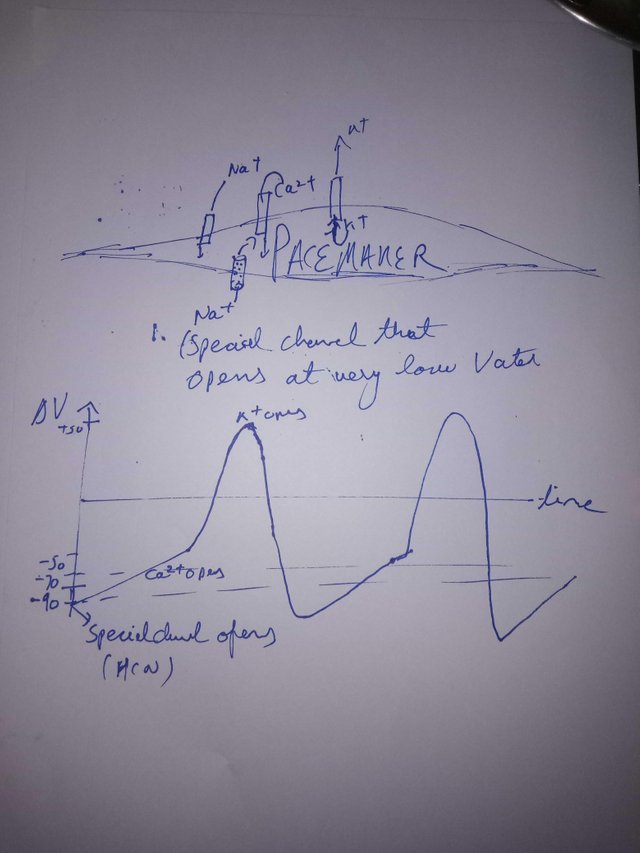
Wait a minute! What starts the process? I mean once the cycle ends, what initiates a second wave and then the third and so on the endless waves for the lifetime. Well, this is done by a specialised group of cells in the heart called pacemaker cells. The pacemaker cells are in an automatic infinite loop created by similar voltage gated calcium, sodium and potassium channels and calcium clock. Except, pacemaker cells have a special voatage gated channel that opens at very negative voltage below -70mV. This causes continous voltage signals in pacemaker cells, which they transmit to cardiomyocytes(see Shih, 1994). Well, the artificial pacemakers, that are used in heart of cardiac patients, replicate this phenomenon via electronics.
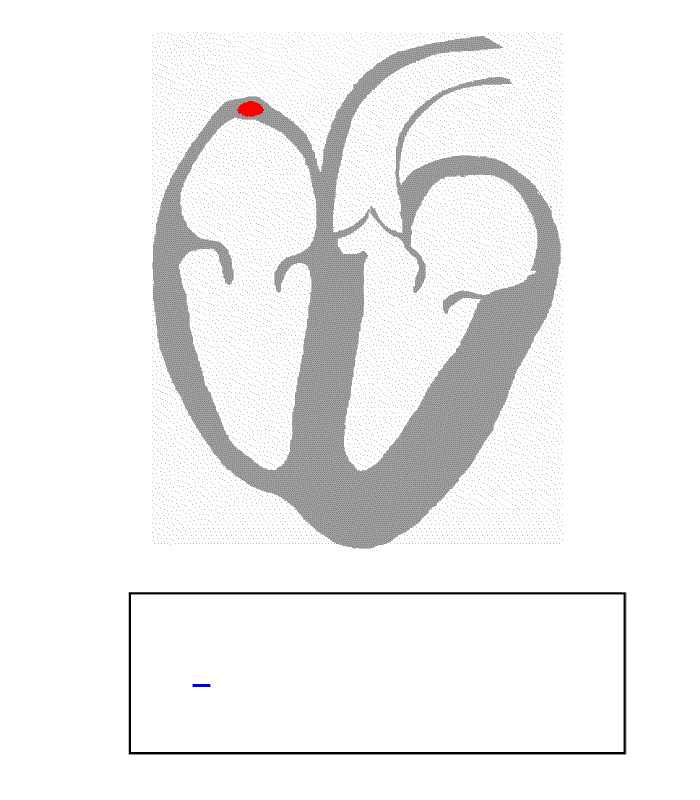
Image by Kalumet | CC-BY-SA-3.0
However, as you already know it, the whole heart doesn't contract in one go. The right atria and then left which just collected blood from the respective vessels, gets a signal from main pacemaker(the SA node, located in right atria). This begins the contraction of atrium. This causes the blood to fill in the ventricles. The AV node, gets the signal from the SA node, and causes the contraction of ventricles. The AV node also makes sure that ventricle contraction is delayed. As the signal is passed on the cardiomyocytes in ventricles, and contraction begins, the valves between atrium and ventricles close causing the first lub sound. The full ventricular contraction causes the blood to rush through the respective arteries. The second dub sounds comes when the valves between heart, and pulmonary artery and arota closes.
If everything is left to automated system you will hear this lub-dub sound 72 times per minute. Except if you are in love, scared, sexually aroused, close to an orgasm, angry or stressed. Well that's because pace of the pacemaker is controlled by the brain and hormones.
The beats of love
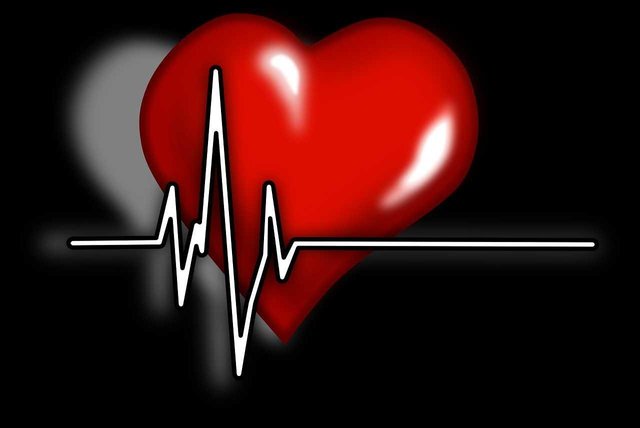
Image by OpenClipart-Vectors | CC0
In the beginning there was a void, and then there was everything(and probably a big bang, somewhere in between)
The early stages of love are a hyperdrive. You see that person you really like, you brain starts planning on pursing them. If you look at brain of someone just starting to fall in love, or having their first kiss - you will see their ventral tegmental area(VTA) firing like nuts(Acevedo et al., 2012). Well yes, this is the area with all those dopaminergic neurons. What activation of VTA means? Usually anticipation of reward. In fact, if you look further you will find a lot of structures in limbic system active, including amygdala(Song et al., 2015). What does amygdala do? It turns on the fight or flight part of stress response, it does so in love, as well.
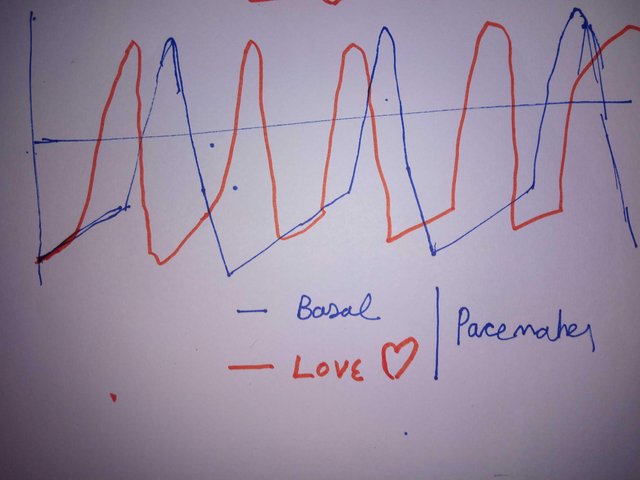
Downstream of amygdala, sympathetic nerves that innervate the heart turns on beta-adrenergic signalling. Sympathetic nervous system also causes adrenal cortex to secrete epinephrine and norepinephrine. Epinephrine(aka adrenaline) and norepinephrine, causes that feeling of rush, your digestive system shuts down, you don't feel hunger and you can't sleep. But among other things these hormones also decreases potassium intake, and increase sodium and calcium intake in your pacemaker cells(see regulation of pacemaker activity for more). This causes the pacemaker cells to fire rapidly and in the process increases the heart rate.
That increased heartbeat, is probably the first thing you realise. Maybe, if you were attentive enough, then sweaty hands and dialated pupils will also be part of romantic songs. But no one pays attention to them as much as they do to the heart. Which explains why heart shape <3 is the global brand ambassador of love; and not sleep deprived eyes.
There is love in the hearts of boring couples too, it just feels different.
In fact, in almost every relationship this excitement dies with time. However, that's not the end of love, it's just the end of stress. This stage is more mellow, a comfort zone. You don't turn on the stress response on seeing your lover. Instead, when you are really stressed and your partner comes and holds you in his/her arms your heartbeat slows down. Turns out, that the body's stress response can be different in new vs old lovers(Zagoory-Sharon and Ruth Feldman, 2014). Though research on the subject is required, but I hypothesize that the calming effect on the heartbeat on seeing a long term ccompanion may maysult from different set of brain regions activating vagus nerve. Like a signal that says - calm down the danger is over.
The vagus nerve, which runs directly from your brain to many organs, including heart releases acetylcholine in SA node. Acetylcholine has an opposite effect on pacemaker cells than what we saw for norepinephrine. It slows down the heart. Which explains that why if you are here in my heart, then my heart will go on and on(without stressing much).
The big freeze, the big crunch and the big rip of happy heart.
But, what happens when this comfort ends. When they tell you they don't want to be with you anymore. When they say or you find out, that they are seeing someone else? Oh! that sudden sinking feeling you get, your stomach clenches, you feel nausea, the pain centers of your brain get activated. The adrenaline is rushing thrugh your body, and if vagus nerve tries to help, it just feels like a skipped heartbeat. Anxiety sets in and palpitations and shortness of breath can follow. Some people, especially women, also report symptoms of what is called the broken heart syndrome. No I am not kidding that is the name for emotional stress induced cardiomyopathy(Mahajani V, et al. 2016). With all the sinking feeling brought about by emotional distress, add palpitations and angina (chest pain). And, it will feel like an acute heart attack, though it is not.
Died of fright
I think I already gave it away, by telling you how amygdala increases heartbeat. Given the fact that amygdala is core of stress, fear, aggression and anxiety, it comes as no surprise that why your heart starts thumping in those situations.
However, what I find most intriguing of all is the sudden death that is induced by fear. Thankfully, I have not witnessed it happening to any human I know; but I was shocked to the core, when this mouse I was supposed to use for the experiment, got a heart attack when I picked it up. Asking my colleagues revealed that they have witnessed it too. Though, the phenomena appeared to be more common in certain genetically modified strains that we had. This made me really curious. I came home and started going through the literature, to see if something similar happens in humans.
Now, I don't know that what genetic mutation causes sudden death due to fear in humans. But such cases appear to happen, and with high incidence, during the times of natural disaters and wars. Turns out, that in both humans and animal models, extreme emotions such as anger and fear can cause ventricular fibrillation(the life threatening rapid and inadequate heartbeat) and arrhythmia(irregular heartbeat). Now, it is known that different emotions use different autonomic nervous system routes to affect the heart. The sympathetic branch causes the heart to race, while parasympathetic branch causes it to mellow down, like we discussed above. However, they never act in solo. If your heart is racing, your vagus nerve will try to mellow it down. If it's too slow then sympathetic nerves will pace it up. In the extreme states of emotional arousal, where everything happens so fast, the nerves might not be able to maintain the adequate balance causing irregular heartbeat, and in some cases even a heart attack(Taggart et al., 2011).
Sress and end of the days
But, then you need to ask that why stress and emotional responses regulate heartbeat in the first place. Well, think of fight and flight response. When running from the predator you don't need to be digesting food or fighting pathogens in your body. But what you need the most is energy to run or fight. The heart is just making sure that the oxygenated blood, nutrients, and hormones are circulating fast enough.
Well, the attempt of heart to do that is also visible in how ventricles which pump the blood to arteries are contracting and relaxing during anxiety. For instance anxiety is associated with elongation of QT interval in ECG(see Lampert, 2015). Well, that's the part that shows deploarization and repolarization of ventricles.
Now, it's all fine if till it's an acute response to emotion arousal. But imagine having chronic stress or anxiety disorder, and doing it over and over again. It's no secret that chronic stress is linked to increased risk of heart attack. Well, apart from other things, the increased blood pressure also increases the probability of wear and tear in your blood vessels(see Robert Sapolsky: Stress and atherosclerosis). The damaged blood vessels will then mount a wound healing response, attracting macrophages and other immune cells to site of damage. Depending on your LDL and apoE status the macrophages will turn into foam cells and cause atherosclerotic plaques. The clogged blood vessels, especially coronary arteries are then a one way ticket to ichemic heart attack or myocardial infarction.
References
Mahajani V, Suratkal V. Broken Heart Syndrome. J Assoc Physicians India. 2016
Shih HT. Anatomy of the action potential in the heart. Texas Heart Institute Journal. 1994)
I accept that steemit-italia and DaVinci staff can share the contents of this post.
Signing off
@scienceblocks
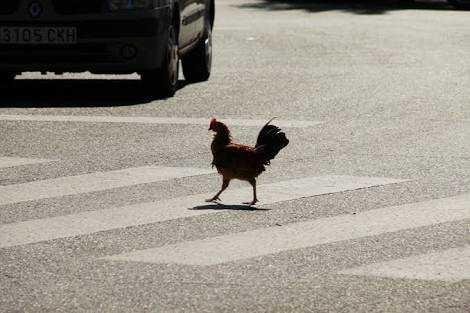
Poor mouse. And poor anxious people! You should issue a warning against people with anxiety reading this!
That akward moment when you not sure if it would be interesting, or sad to find out that reading your post could kill people! And then you start contemplating your thought process!
😜
Woah that was an amazing post! Thanks for your entry!
Do not forget to share this link in the #post-base channel in our discord server :)
Thank you
This post was shared in the Curation Collective Discord community for curators, and upvoted and resteemed by the @c-squared community account after manual review.
This post has been voted on by the steemstem curation team and voting trail.
There is more to SteemSTEM than just writing posts, check here for some more tips on being a community member. You can also join our discord here to get to know the rest of the community!
Congratulations @scienceblocks! You have completed the following achievement on the Steem blockchain and have been rewarded with new badge(s) :
Click on the badge to view your Board of Honor.
If you no longer want to receive notifications, reply to this comment with the word
STOPHi @scienceblocks!
Your post was upvoted by @steem-ua, new Steem dApp, using UserAuthority for algorithmic post curation!
Your UA account score is currently 2.140 which ranks you at #21831 across all Steem accounts.
Your rank has not changed in the last three days.
In our last Algorithmic Curation Round, consisting of 597 contributions, your post is ranked at #322.
Evaluation of your UA score:
Feel free to join our @steem-ua Discord server